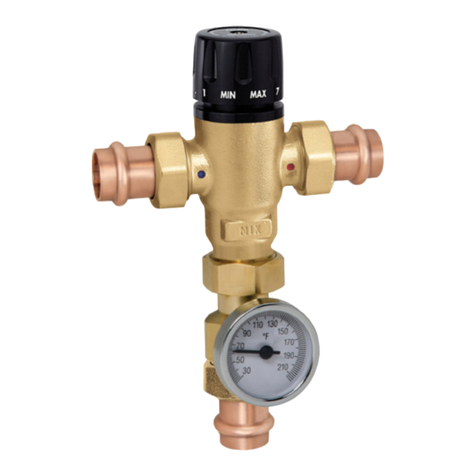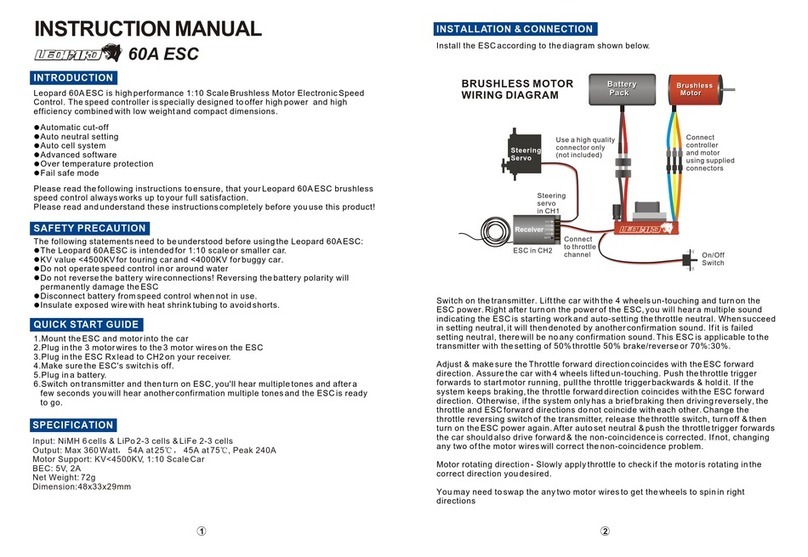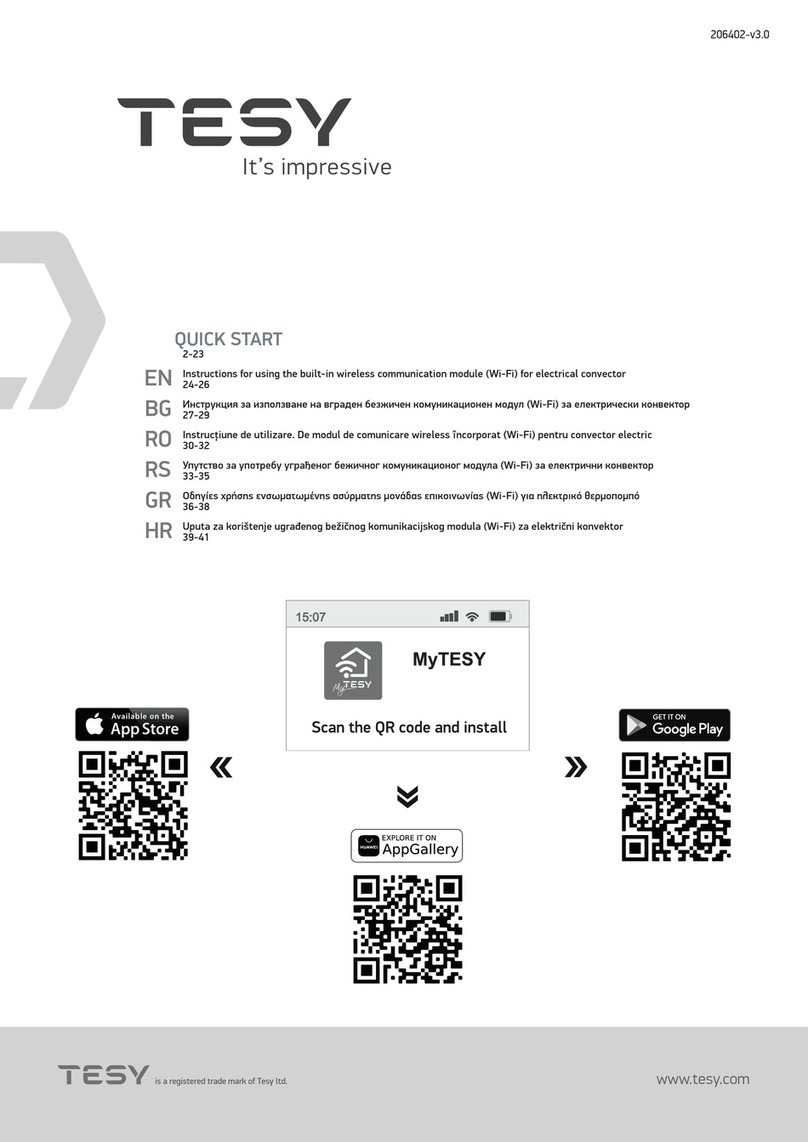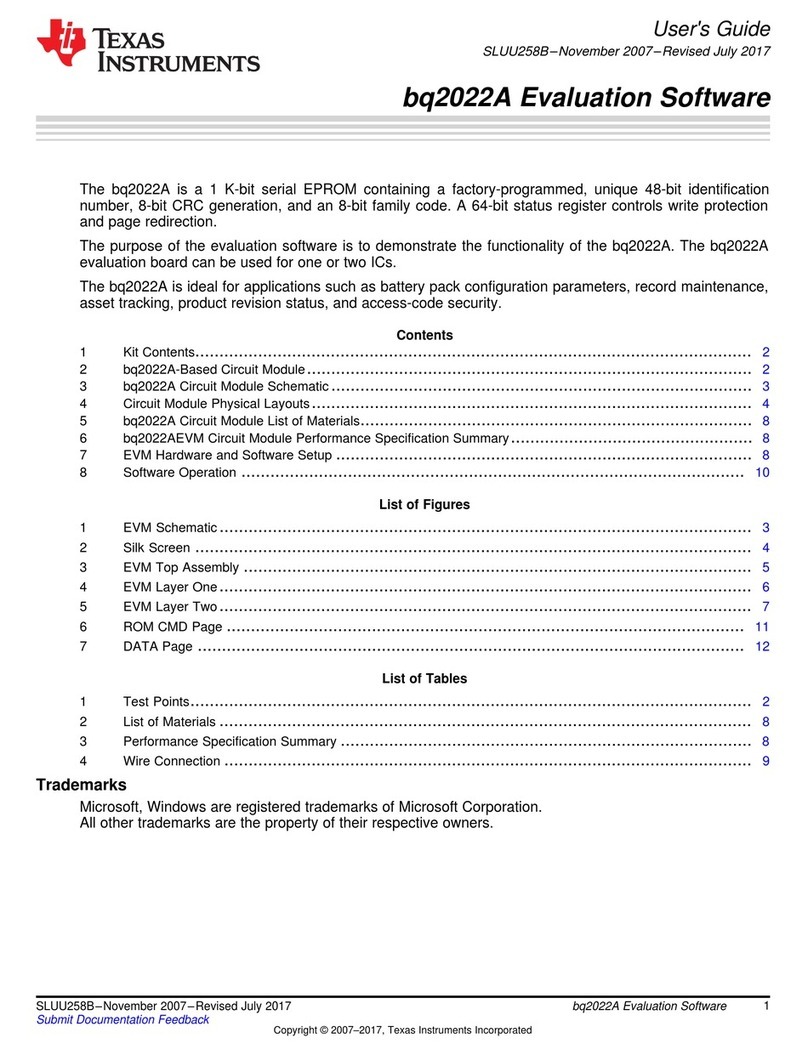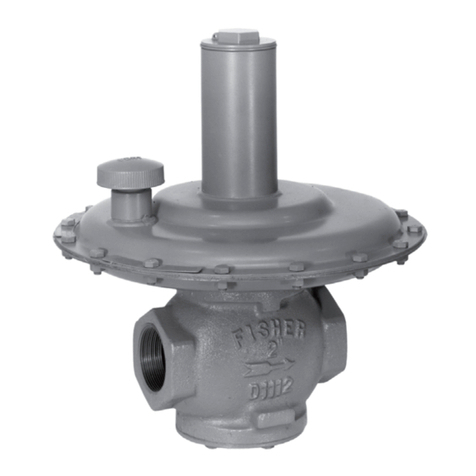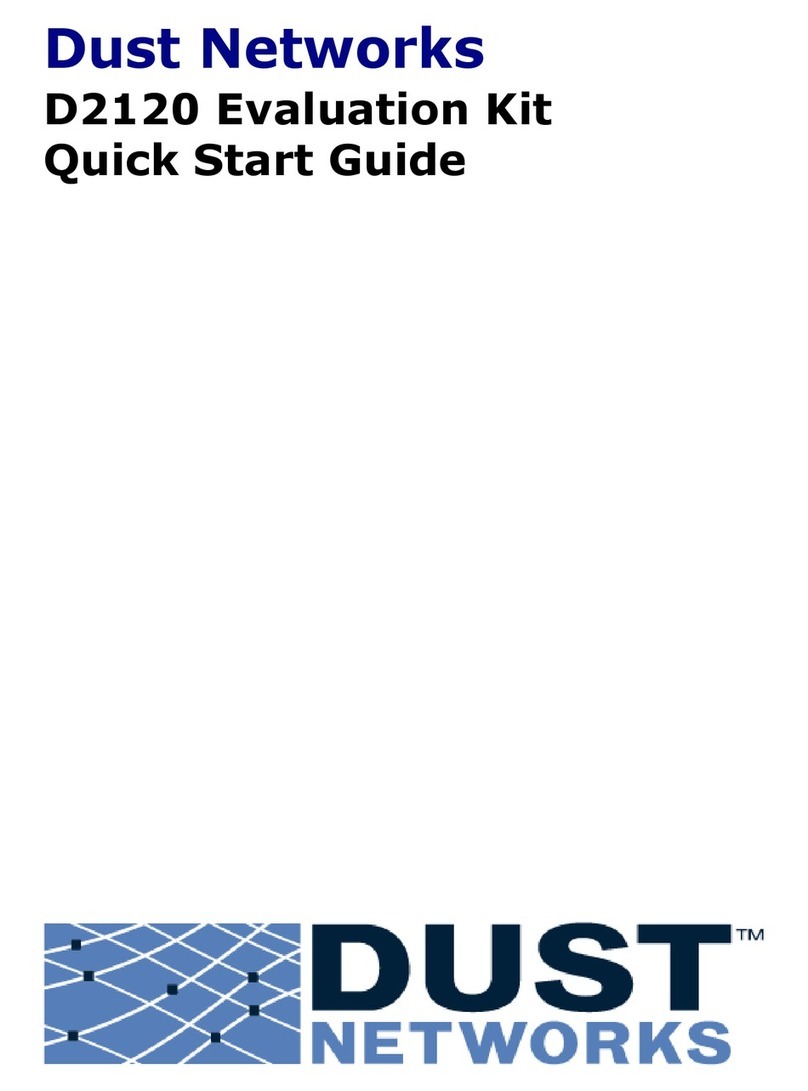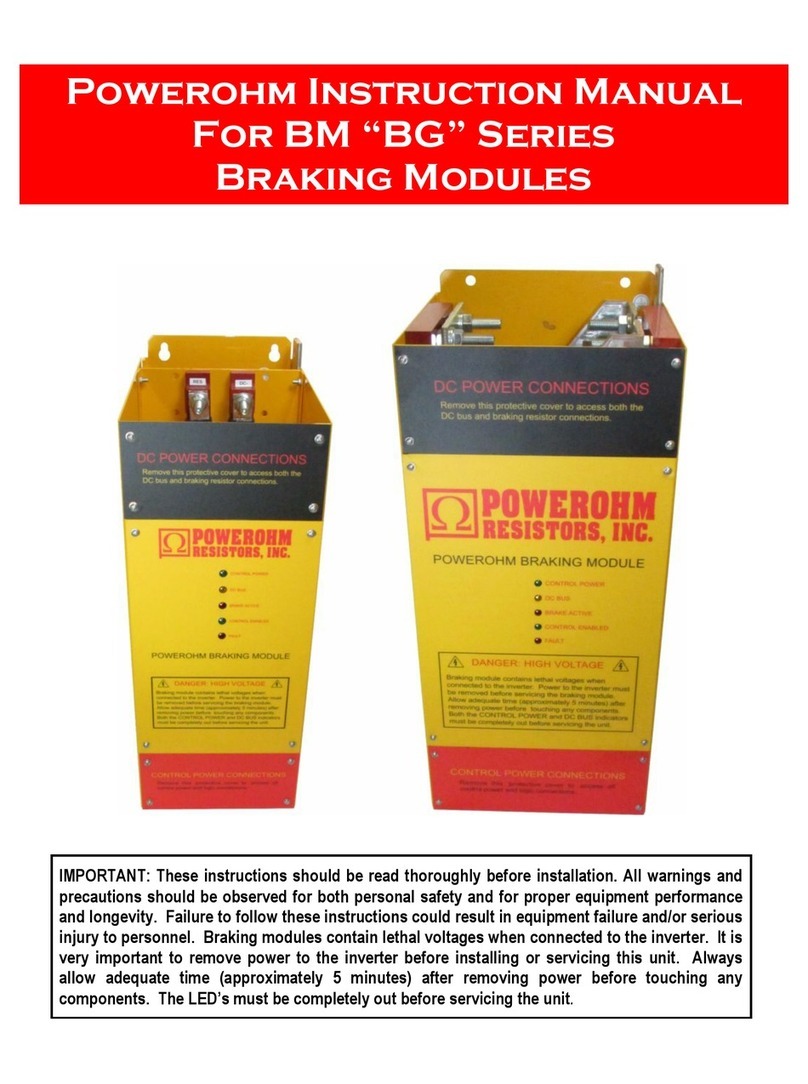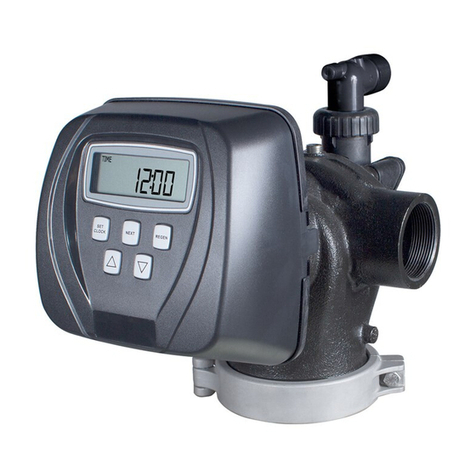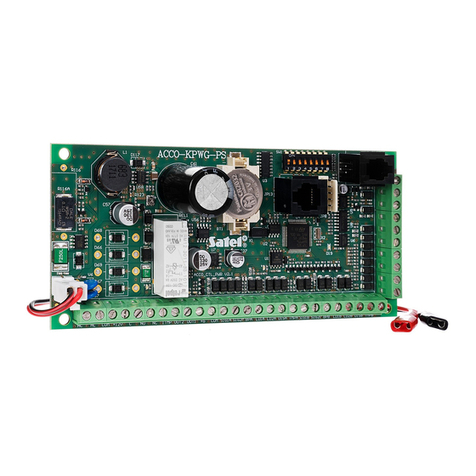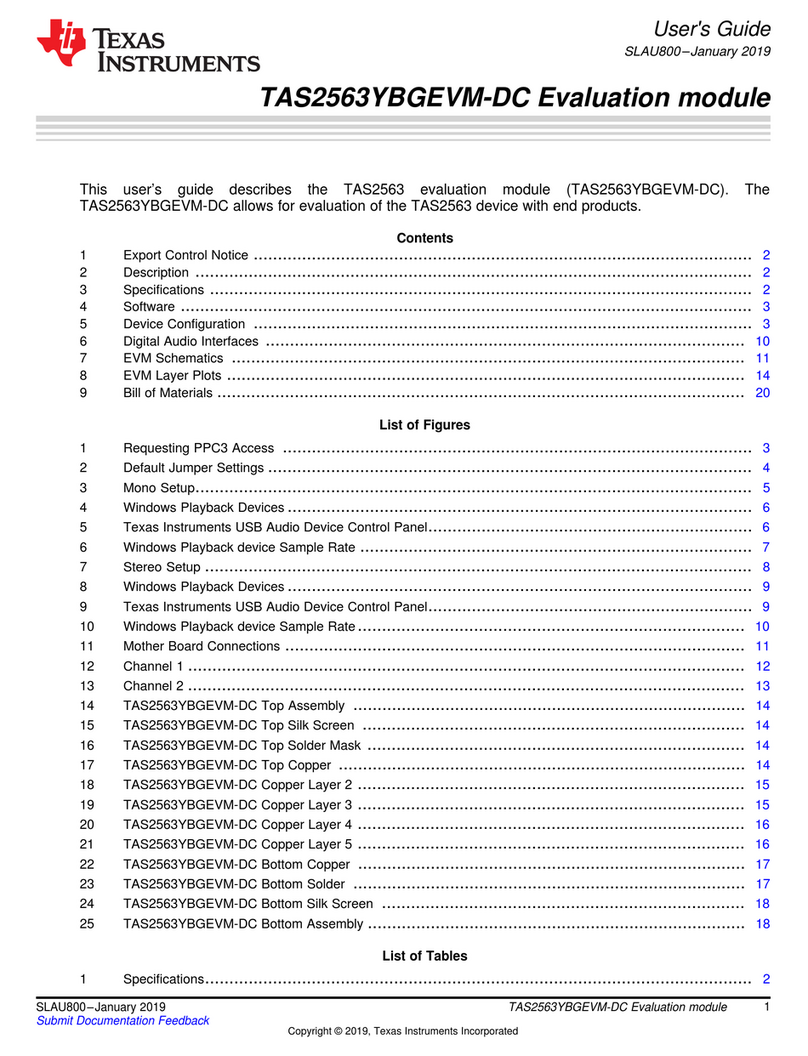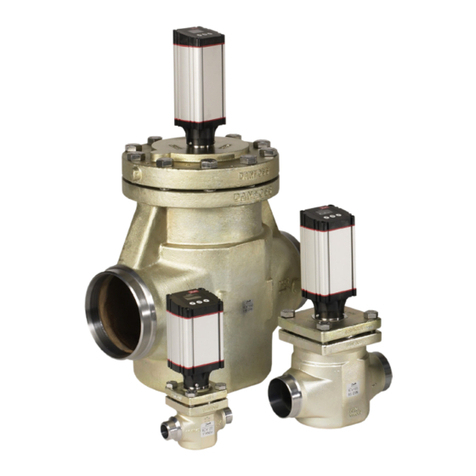Adani Solar ASP-7-AAA User manual

ASP-7-AAA
ASP-6-AAA
ASP-6-B-AAA
ASP-6-AB-AAA
ASM-7-PERC-AAA
ASM-6-PERC-AAA
ASM-6-B-PERC-AAA
ASM-6-AB-PERC-AAA
ASP-14-AAA
ASM-14-PERC-AAA
Applies to the below PV Module
Adani House,
Near Mithakhali Circle,
Navrangpura, Ahmedabad – 380009,
Gujarat, India
Tel : +91 79 2656 5555 Fax: +91 79 2555 55.
MUNDRA SOLAR PV LIMITED
MANUAL IEC & UL VERSION
PV MODULE INSTALLATION

1. DISCLAIMER OF LIABILITY 3
2. SAFETY MEASURES 4
2.1 Fire Safety 5
3. PV MODULE UNPACKING AND STORAGE 5
3.1 Module Identification 5
4. ENVIRONMENTAL CONSIDERATIONS 6
4.1 Climate Conditions 6
5. SITE SELECTION 7
6. MOUNTING INSTRUCTION 7
6.1 Mounting Methods 7
A. Bolt Type Fixing 7
B. Clamp Type Fixing 9
6.2 Pv Module Grounding 12
6.3 Electrical Wiring 14
6.4 Connectors 17
6.5 Bypass Diodes 17
7. ELECTRICAL & MECHANICAL PARAMETERS 18
8. ELECTRICAL CONFIGURATION 19
8.1. Fuse Rating 20
8.2 Selection of Inverter and Compatibility 20
9. PV MODULE MAINTENANCE AND CARE 20
10. PRODUCT RECYCLING & END OF LIFE 21
11. WARNING 21
12. CONTACT DETAILS 21
CONTENT

2. SAFETY MEASURES
•On direct exposure to sun light PV module
produces electricity, which can result in electric
shock or while working with module exposed
under direct sunlight, it is advised to use
installation tools and for precaution, wear hand
gloves to protect from electrical hazards. Also it
is advised to keep away from any metallic
contact touching the human body.
•Standing on module is strictly prohibited as it
can impact the module's performance and is not
applicable to warranty claims if it is discovered
that people have stood on PV modules, no one
should stand on the module rare and front
surface. Uneven pressure develop during
standing on it can damage solar cell.
•Module front surface is made of tempered glass
and has an ARC coating, so it needs special care
in handling. If glass breaks due to any reason, it
is advised to keep human contact away. At
ambient wet condition any human contact with
the broken glass surface may lead to electrical
shocks. Once module glass breaks it has to be
scraped or disposed after removing it from
String after String is disconnected from the
load.
•Any loose connection in connectors of PV
module can cause electrical arcing and can lead
to fire hazard. It is recommended to not keep
any gap in connectors. Also ensure all the
connectors should be corrosion free and
protected against corrosion and soiling. It is
strictly prohibited to remove or cut any
connector of PV Module for installation
easiness by the installer / customer and the
module is deemed out of warranty.
•Do not install or handle any PV Modules in
unfavourable environmental condition like high
flow winds and wet snowy roof surfaces for
personal safety. Modules should always be dry
while installing.
•Please Ensure the polarity of the modules or
strings is not reversed in relation to the other.
• This Installation Manual is
applicable for Mundra Solar PV
Ltd.'s (MSPVL) PV Modules. MSPVL
is referred as Adani / Adani Solar in
the Installation Manual as MSPVL is
part of Adani Group.
• This manual is for authorized &
trained users only. ADANI is not
responsible for any type of
mishandling or failure to follow
instruction manual. Any type of
Loss, Damage, Hazard, Injury or
Expense because of improper
installation, Handling, Usage &
Maintenance is not in scope of
ADANI.
• Adani Solar assumes no
responsibility for the infringement
of intellectual property rights or
other rights of third parties that
may result from use of the module.
No license is granted in this regard,
either expressly or implicitly, or
under any patent rights.
• Information contains in this
instruction manual is based on
ADANI Information and expertise.
This manual and specification can
be changed by the company
without giving any prior
information. Adani has rights to
amend this document any time
including PV module specification
without prior notification.
• The Installation manual is
applicable for both 1500V & 1000V
series modules. It is recommended
to check & get a confirmation from
the manufacturer on the rated
system voltage of the product
before using the panels.
•Any artificial sunlight
focusing on PV module is not
recommended as it can
reduce its performance and
life cycle.
•Adani PV modules are
certified to operate in Class A
condition installed below a
specified voltage level (1500V
/ 1000V dc). Consider this
voltage range while designing
the power plant. This value
should be taken into
consideration when designing
the power plant, as per the
temperature ranges present
at the site. The mixing of
power classes in one string is
not allowed and can be
harmful. Damage to modules
due to such mixing can lead to
the invalidity of product
warranties.
•At different environmental
conditions, PV module can
produce high current and
voltage than the measured in
STC condition. Snow and
water causes reflection which
can increase the sunlight
intensity which can increase
the flow of current and Power
output. The Isc value should
be multiplied by 1.25 when
determining the conductor
current ratings, fuse sizes, and
the size of controls connected
to SPV output. Refer to
Section 690.8 of the National
Electric Code (for modules
under UL spec) to check when
an additional multiplying
factor of 1.25 may be
applicable.
•The top structure and
installation may affect the
building fire safety; improper
installation may lead to fire
hazards. As required by the local
authorities, use such devices as
ground fault cut-outs and fuses.
•Please do not operate the panel
in the environment vulnerable to
combustible gases or near any
equipment.
•MSPVL PV Modules (for modules
under UL spec) have a Type 1 fire
resistance rating in accordance
with UL 1703 certification. The
fire rating of this PV module is
valid only when mounted in the
manner specified in the
mechanical mounting
instructions. When PV modules
are mounted on rooftops, the
roof must have a fire resistant
covering suitable for this
application. PV modules are
electrical generating devices
that may affect the fire safety of
a building.
•In the event of a fire, PV modules
may continue to produce a
dangerous voltage, even if they
have been disconnected from
the inverter, have been partly or
entirely destroyed, or the system
wiring has been compromised or
destroyed. In the event of a fire,
inform the fire crew about the
particular hazards from the PV
system, and stay away from all
elements of the PV system
during and after a fire until the
necessary steps have been taken
to make the PV system safe.
2.1 Fire Safety
Consult your local
authorities for
guidance and
requirements for
installation or
building fire
safety.
1. DISCLAIMER OF LIABILITY

3. PV MODULE
UNPACKING AND
STORAGE
•After receiving the PV
Modules, Customers are
requested to match the
product specification as it had
been ordered. All the module
serial number and other details
are present on the box of the
PV modules.
•Do not stack packing boxes
(pallets) more than 2 boxes
high. If pallets are temporarily
stored outside, an external
protective cover should be
placed over them and the
stack height should not be
more than 1 pallet high.
•During unpacking there should
be two people to unpack from
vertical side as shown in figure
below. Also keep attention
during unpacking that one
module should not fall on other
module inside the box.
•Improper handling of
PV module may cause
scratches and damage to
module. It is not recommended
to apply adhesive or paints on
the surface and frame of the
module.
•Do not short the –Ve & + Ve
terminal of the Junction box of
the PV Module at any time.
•Always use cutting pliers to
cut the cable tie of the
PV module. Do not use any
knife as it can damage the PV
Module.
•It is not recommended to place
modules directly on another
module.
3.1 Module Identification
Every module has a unique serial number, which is laminated
behind the glass. Please do not tamper with the serial
number of the module and always record all serial numbers
in an installation for your future records.
4.1 Climate Conditions
All Adani Solar modules are tested for IEC 61215, IEC
61730-I & II, UL 1703, IEC 61701, IEC 62716, IEC 62804.
The modules are qualified for application Class A.
Modules qualified for safety through IEC 61730 within
this application class is considered to meet the
requirements of Safety Class II. ADANI PV modules meet
the requirement of European standards as they are also
tested for the Ammonia fumes that may be present in
Barns sheltering Cattle, Pigs, as well as sustainability for
Installation in Humid (Coastal) Areas of high Sand Storms.
Adani module Passed in testing of Salt mist IEC 61701 Salt
mist corrosion test (Severity VI) with a salt concentration
of 5% by weight, galvanic corrosion can occur between
the aluminium frame and mounting or ground materials if
such materials are made of dissimilar metals. Stainless
steel and aluminium metal's direct contact is not
recommended for seaside installations to avoid metal
corrosion.
Environmental Condition
Ambient temperature: -40°C to +50°C.
Operating temperature: -40°C to +85°C.
Storage temperature: -20°C to +50°C.
Humidity: ≤85 RH%
4. ENVIRONMENTAL CONSIDERATIONS
Design Load: 800Pa and 1800 Pa
Safety Factor: 3
Mechanical Load Pressure:
5400Pa (112.8lb/ft2) from front and 2400 from
the rear (50.12lb/ ft2).
Stability of structure
Structure matching the mounting hole pitch of
different types of modules is used to survive the
load required and fatigue of the outdoor
application. The structure should be coated to
survive in external environment till lifecycle of PV
module of 25 Years. Please consult the Mundra
Solar technical support department for more
information on the use of modules in special
climates, , such as an altitude greater than 2000 m.
Important instruction for Mounting
•Always avoid loop formation during
designing, to minimize the risk during
indirect light striking.
•Confirm mounting system must withstand
the Loads of wind & and snow should not
cross the maximum rated load bearing
capacity of PV module that is 2400 Pa for
wind and 5400 Pa for snow. Adani advices
the customer to choose the modules
carefully considering the environmental
conditions.
•Modules are evaluated by third party lab for
max. positive loading of 5400 Pa.
•Module installation in projects must face
north while being installed in the southern
hemisphere and the modules should be
south facing while being installed in the
northern hemisphere. Electricity generation
reduces when the module installed at site
facing west or east. Failure to follow this
instruction will lead to lesser power
generation.
•When the modules are connected in series,
the angle at which it is installed should be
the same for all the modules. If modules in
series connected system are installed at
different angles, the radiation of sun
becomes uneven which will result in different
fluctuating current across the string and will
lead to loss in Power Output.
•PV module facing directly to sun produces
more power. When solar modules are
installed on permanent structure it is
recommended to tilt the PV modules for
optimum performance during winter season.
Measurement of tilt angle done between the
solar module and the ground. Recommended
Tilt Angle for a fixed system is listed below.
•PV modules should not be installed under
shade or shadow under any conditions as it
may lead to current mismatch across the
solar cells leading to damage of the solar
module. Shadow on the solar module is only
acceptable if the irradiation is lesser than
200 W/m2.
•Never disconnect module cables when it is
connected with load.
• The mechanical load bearing capacity depends upon the installer's
mounting methods and failure to follow the instructions in this
manual may result in different capabilities to withstand snow and
wind loads. The system installer should ensure that the installation
methods used meet these requirements as well as any local codes
and regulations.
• In installations not under the requirements of the NEC, the values
of ISC and VOC marked on this module should be multiplied by a
factor of 1.25 when determining component voltage ratings,
conductor capacities. . Installation shall be in accordance with CSA
C22.1, Safety Standard for Electrical Installations, Canadian
Electrical Code, Part 1”.overcurrent device ratings, and size of
controls connected to the PV output if the modules are being used
in canada.
• MSPVL sending modules always in packed condition. The qty.
details is always indicating outside box on sticker. If customer
received any lose module / open box condition at the time of receipt
of consignment, Receiver is advised to hold unloading and inform
MSPVL - Logistics team on mobile no-91 9099003579 and start
unloading as per his advice.
• Customer need to compare receipt no of Pallets qty. against
mentioned qty. on transporter’s LR / MSPVL packing list at the time
of receiving of consignment, For any difference in QTY of no of
pallets, recipient is advised to mentioned discrepancy clearly on LR
and obtain signature of vehicle driver and also obtain driving
License copy of driver.
• For any “ physically damage of pallets on vehicle “ Customers are
requested to intimate us along with support photographs of
damaged pallets-on vehicle for Insurance claim purpose on same
day of receipt of container and same need to inform MSPVL-
Logistics team on mobile no-91 9099003579 and start unloading as
per his advice.
• It is necessary to mentioned discrepancy remark clearly on
transporter LR duly signed and stamped, It is also necessary to
obtain signature of driver on LR / POD. The discrepancy remarks
should be agreed by Vehicle driver
• All LR (POD) shall be stamped and sealed duly signature by
customer mentioning number of pallets received.
• For the detail Procedure for transit damage insurance claim please
refer to document no. MSPVL/MDL/PQA/SOP/15
Fig 1: Method of
module unpacking

Fig 2: 72 Cell Module Drawing of
ASM-7-PERC-AAA & ASP-7-AAA
3.1 Module Identification
PV modules can be installed or fixed by Bolts
method or by clamp method. For bolts type
fixing corrosion resistive M8 bolts to be
used, Mounting methods should ensure
following things:-
•Minimum clearance required between
module frame and surface of the roof or
wall is 200 mm.
•Minimum distance between each Solar
PV Module should be 10.50 mm.
•Drainage holes should be kept open and
no blockage is allowed in the drainage
hole.
PV modules are not to be subjected to wind
or snow loads exceeding the maximum
permissible loads and should not be
subjected to excessive forces due to the
thermal expansion of support structures,
careful consideration has to be shown
during system design and installation such
that thermal expansion of support
structures do not cause any breakage of PV
modules which will not be part of Adani
Solar's Warranty Document. When modules
are ground mounted, select the height of
the mounting system in such a way as to
prevent the lowest edge of the module from
being covered by snow for a long time in
winter in areas that experience severe snow
fall. If snow settles on the PV modules, the
regular clearing of snow and other foreign
particles and dust and dirt is highly
recommended to ensure the long-term
reliability of the PV modules. Failure to
comply may result in damage to the module
and lead to deformation or drop in power
output which will not be covered under
warranty.
* “The module is considered to be in compliance with UL 1703 only when the module is mounted in the
manner specified by the mounting instructions below.”
*“Any module without a frame (laminate) shall not be considered to comply with the requirements of
UL 1703 unless the module is mounted with hardware that has been tested and evaluated with the
module under this standard or by a field Inspection certifying that the installed module complies with
the requirements of UL 1703”,
A. Bolt Type Fixing
Every module frame contains 8 mounting holes of 9 mm X 14mm. It is recommended from ADANI to use
corrosion resistance stainless steel fixing. The module fixed with the support of M8 bolt, washer and
nut. For reference please see the below image. The assembly of M8 bolt, nut, washer and the PV
module should be tightened to a minimum torque of 16-25 Nm.
Mechanical Drawings of PV Module “ASM-7-PERC-AAA & ASP-7-AAA”.
• PV modules should be installed in a
place where no shading occurs
throughout the year. Shading can be
minimized by ensuring that the
distance between an obstruction and
the solar array is more than three times
the height of the obstruction.
• PV module can be installed in portrait
or landscape orientation, impact of dirt
shading can be minimized by orienting
the PV modules in portrait. The module
facing should be south in northern
hemisphere and north in southern
hemisphere.
• Sufficient row to row gap has to be
chosen and PV modules should be
spaced between two rows
appropriately such that no shadows
appear on the PV module at any part of
the day during 365 days due to inter
row spacing.
• For optimum energy production, solar
modules should normally be mounted
facing the equator at an angle to the
horizontal plane equivalent to the
latitude of the installation. If the PV
module is placed at a different angle or
orientation, this could have a direct
impact on the power output.
• To maintain the fire class rating any
slope of 1: 2.4 is required.
• Do not use mounting methods where
drainage holes are blocked.
• At any condition PV module should not
be installed by immersing the module
under water.
• PV module should not be installed on
moving objects like vehicle or vessel.
• ADANI solar module is fire rated with
Type 1 for Class C.
5. SITE SELECTION 6. MOUNTING INSTRUCTION

B. Clamp Type Fixing
ADANI Solar has done number of tests on clamps
and on the basis of that test results, it is
recommended to use clamps with EPDM or with
insulating type washer only.
• Total 4 numbers of clamps are required to fix the
PV module on structure or mounting rail.
•To avoid any kind of breakage of glass, clamps
should not touch the glass and the shadow of
clamp should not come on the module front
surface.
•No modification or changes in the structure of
module frame is permissible.
When modules fixed with clamp type fixing
method, 4 clamps are required to fix the module, 2
clamps on each long side frame and 2 clamps on
each short type frame side. ADANI solar modules
are certified for bearing 2400 Pa wind load and
5400 Pa snow load on the front side of the PV
module. To bear this load more number of clamps
can be used to fix the module.
Fig 3: PV Modules Installed with screw fitting method
PV LAMINATE
ALLUMINIUM FRAME
SCREW
LOCKING NUT
NUT WASHER
SUPPORT STRUCTURE
Fringe Module Installation
Fig 4: PV Modules Installed with Fringe Clamping Method
Middle Modules Installation
Fig 5: Middle Modules Installed with Clamping Method
PV LAMINATE
ALLUMINIUM FRAME
SCREW
LOCKING NUT
NUT WASHER
SUPPORT STRUCTURE

• Figures to represent mounting
methods and applies to all 144,
72, & 60 Cell PV Modules.
Different Mounting
Configurations can be tried as
per Installer's calculations, but
however failure to comply with
the above suggestions may result
in a lowering of load handling
capabilities and may lead to
failure of any overload situation
which may not be covered under
product warranty.
Mounting Methods
Bolt type Fixing
Long Side Clamping
Short Side Clamping
At 2400 Pa load condition At 5400 Pa load condition
Mounting Hole Mounting Hole
Use Four Mounting Hole Use Eight Mounting Hole

Temp coefficient of Current
Temp coefficient for voltage
Temp coefficient of Power
System Voltage
NOMT
Series Fuse Rating
Junction Box
Aluminium Frame
Solar Glass
Weight
Product Certifications
Output cable
Bypass diode
1
2
3
4
5
6
7
8
9
10
11
12
13
0.069 %/°C
-0.31 %/°C
-0.40 %/°C
1000V/1500V (IEC & UL)*
45±2 °C
15
IP67 with MC4 compatible
connectors.
Anodized aluminium frame
with twin wall profile
High Transmittance ARC Glass
23.5 Kgs
IEC 61215 , IEC 61730 , IEC 62804 ,
IEC 62716 , IEC 61701
1200 mm length cable, MC4 &
Amphenol compatible connectors
3 DIODES
For more specification please refer product datasheet.
2. Typical specification of ASP-7-AAA series modules
Dimensions depending on Module type in (mm)
ASP-7-AAA;
ASM-7-PERC-
AAA
1998
965
48.31
202
499.5
249.75
241.25
ASP-6-AAA ;
ASM-6-PERC-
AAA; ASM-6-B-
PERC- AAA ;
ASM-6-AB-
PERC-AAA
1660
947
47.45
198.4
415
207.5
236.75
ASP-14-AAA
ASM-14-PERC-
AAA
1996
947
47.45
198.4
499
249.5
236.75
Length
Breadth wise
mounting hole pitch
X
Y
A
B
C
Model Name
Voltage (V)
1000W/m2
800W/m2
600W/m2
400W/m2
200W/m2
Current-Volage curve for mono crystalline
1000W/m2
800W/m2
600W/m2
400W/m2
200W/m2
0 21 3 5 7 8 9 1064
0 10 20 30 40 50
Current (A)
Voltage (V)
Current-Volage curve for multi crystalline

•Appropriate grounding is done by
bonding the module frames and all the
metallic structure together with the
help of a grounding conductor made of
copper, copper alloy or other material as
per the electrical conductor perspective
of National Electrical Codes. The
grounding connector should be
connected to earth with the help of
earth ground electrode.
•ADANI solar modules can be installed by
using any third party listed grounding
devices to connecting grounding
terminals. As per instruction manual of
grounding device manufacturer, the
grounding device should be installed. It
is recommended to ground every
module at the provided grounding holes
(4 mm or 5/32 inch diameter marked
with ground symbol.
•For grounding hole location and its size
please refer to the product catalogue.
•Adani recommends following grounding
procedures for the proper groundings.
Please refer below figure
6.2 PV Module Grounding
•As per National Electrical code (NEC
Guidelines) all the PV Module (modules
under UL spec) frames and mounting
structures must be properly grounded for
safety of people on the site. The module
frame must be properly grounded (refer to
NEC clause 250).
•Appropriate grounding is done by
bonding the module frames and all the
metallic structure together with the help
of a grounding conductor made of copper,
copper alloy or other material as per the
electrical conductor prospective of
respective national standards. The
grounding connector should be
connected to earth with the help of earth
ground electrode.
•In case of metallic support, the surface of
the frame must be electroplated.
•First, carefully strip 16mm of the
insulating jacket from the end of
grounding wire to avoid nicking or cutting
conductors, insert the wire into the slot of
the lug (see picture), and screw down the
slotted screw.
•To fulfil the grounding & bonding
requirements, please refer to the regional
and national safety and electrical
standards. Always use recommended
type of connectors or similar for
grounding.
•If grounding is required, the grounding
wire must be properly fastened to the
module frame to ensure
•Screw must be tightening with torque of
2.3 to 2.8 Nm [20 and 25 in. - lbs.]. The
head of the screw must be flushed with
the base and base must be flush with the
frame.
Fig: Grounding assembly of PV module

“A module with exposed conductive parts is considered to be in compliance with UL 1703 only
when it is electrically grounded in accordance with the instructions presented below and the
requirements of the National Electrical Code.
Procedure 1:- Grounding by bolts: 2058729-1
1) Wire bolt and slot 2) Mounting wash hex nut 3) Aluminium frame
4) 4 to 16mm2 cable 5) HEX nut
•Tyco made grounding hardware comes with
grounding bolt, mounting and grounding
hex nut inside the package.
•Electrical contact developed by penetration
of anodized coating of the aluminium frame
and tightening the mounting.
•Grounding wire dimension should be
considered of 6 to 12 AWG solid bar copper
and installed under the wire binding bolt.
•Tightening of wire binding bolt must be
done at proper torque level 45 in lb.
Procedure 2:- Grounding by bolts: # 2058729-1
•Tyco made grounding hardware comes with
grounding bolt, mounting and grounding
hex nut inside the package.
•Electrical contact developed by penetration
of anodized coating of the aluminium frame
and tightening the mounting hex nut by
applying proper torque of 25 in lb. Hex nut
comes with a star washer.
•Grounding wire dimension should be
considered of 6 to 12 AWG solid bar copper
and installed under the wire binding bolt.
•Tightening of wire binding bolt must be
done at proper torque level 45 in lb.
•Tyco grounding bolt is only recommended
to use with 6 to 12 AWG solid copper wire.
1) Wire slot (available for 4-6 mm2 cable) 2) Slider 3) Bolt 4) Base 5) Nut
Procedure 3: ERICO grounding bolt EL6CS14-6
1) Machine bolt A 2) Machine bolt B 3) Belleville washer 4) Flat washer 5) Clearance
hole for 10[M5] machine bolt 6) Aluminium frame 7) Machine bolt hex nut with lock
washer 8) Grounding bolt
It is recommended that lug should be installed on a surface that is larger than the bottom
surface of the lug.
•Lug should be fixed on the grounding hole present on the PV module.
•To secure grounding bolt to the module frame machine bolt A should be torqued to 35
in lb,
•Grounding bolt can be used with only 6-12 AWG bare copper wire.
•Machine bolt must be torqued up to 35 in lb for the proper wire binding.
•“Where common grounding hardware (nuts, bolts, star washers, spilt-ring lock washers,
flat washers and the like) is used to attach a listed grounding/bonding device, the
attachment must be made in conformance with the grounding device manufacturer’s
instructions.”
•“Common hardware items such as nuts, bolts, star washers, lock washers and the like
have not been evaluated for electrical conductivity or for use as grounding devices and
should be used only for maintaining mechanical connections and holding electrical
grounding devices in the proper position for electrical conductivity. Such devices,
where supplied with the module and evaluated through the requirements in UL 1703,
may be used for grounding connections in accordance with the instructions provided
with the module.”

• All wiring should be performed by
well-trained installers as per the local codes
and regulations.
• It is recommended to connect only such
number of modules in series such that the
system voltage should not exceed the rated
value at any time of the year. The EPC to
choose the appropriate design based on
the Inverter MPPT ratings and operating
voltage conditions and the environmental
conditions considering the lowest
temperature at the site.
• To increase the operating voltage , PV
module have to connect in series and for
connecting modules in series , positive
connector of one module is connected to
the negative terminal of another module.
During series connections, please ensure
the sound of click should come. Click sound
shows the proper connectivity between the
two terminals. Adani recommends a
maximum of 2 strings to be connected in
parallel with appropriate string fuse for
circuit protection.
• If any module/array/string is connected in
reverse polarity, in that case product can be
damaged permanently and repair is not
possible and Warranty will not rendered to
those modules. Before making parallel
connection always verify voltage level and
polarity of the string. If during
measurement any reverse polarity or a
voltage difference of 10 V found between
the strings then check the strings circuit or
string configuration before making
connection. All the wiring should be
performed by well trained and qualified
technicians only.
• It is highly recommended and advised for
the EPC to use Blocking diodes of
appropriate specifications in String
Combiner boxes to prevent any reverse
current arising out of parallel strings due to
voltage mismatch across Strings in Grid
Scale utility power plants or from Storage
devices if used with Storage solutions.
• ADANI Solar modules contains copper
cables with 4mm2 cross-sectional area
with voltage rating 1000V/1500V (IEC&UL)
for maximum system voltage, 90° C and are
also UV Resistant. Do not expose cable in
water logged place. When additional
connectors and cables are used then check
that connectors should be compatible with
MC4 and cables are 12AWG.
• Maximum system voltage should be less
than the rated system voltage or the
maximum input voltage of the inverter. Voc
α(1/T) so the open Circuit Voltage require
to calculated at the lowest Ambient
temperature for the location Power
generation unit.
For this below formula can be used:
System voltage =
X * Voc * [1 + ((Tα-Voc (%) x (25 - Tmin))] Where;
X - No: modules which are connected in series.
Voc - Open circuit voltage of each module (Refer to the Data Sheet)
Tα-voc - Thermal coefficient of open circuit voltage for the module in Percentage
Tmin - Minimum ambient temperature of the location of the plant
• Outer cable diameter maximum is 7 mm and minimum is 5 mm.
• In field application it is recommended to use 4 mm2 cables insulated for minimum of 90°C
and designated as PV wire.
• Bending radius of junction box cable is minimum 42 mm.
Bending radius of
junction box should be
minimum 42 mm
Bend
Radius
Correct routing
Incorrect routing
1. SERIES WIRING
2. PARALLEL WIRING
3. SERIES PARALLEL WIRING

6.4 Connectors
• Protect unplugged connectors against moisture, dust and any
environmental pollution. Only clean and dry plugged connectors
fulfil their ingress protection (IP) class. Ensure that connector
caps are hand tight before connecting the modules. Do not
attempt making an electrical connection with wet, soiled, or
otherwise faulty connectors. Avoid sunlight exposure and water
immersion of the connectors. Avoid connectors resting on the
ground or roof surface.
• Faulty connections can result in arcs and electrical shock.
Check that all electrical connections are securely fastened.
Make sure that all locking connectors are fully engaged and
locked.
• The junction boxes used with MSPVL PV modules contain
bypass diodes wired in parallel with the PV cell strings. In the
case of partial shading, the diodes bypass the current generated
by the non-shaded cells, thereby limiting module heating and
performance losses. Bypass diodes are not overcurrent
protection devices.
*Modules equipped with PV wiring connectors that comply with
the Standard for Connectors for Use in Photovoltaic Systems, UL
6703, shall have the specific allowable mating connector
manufacturer(s) and model number(s) listed, as well as contact
information and/or website of the PV connector manufacturer.
If a specific module product is available with multiple PV wiring
connectors from various manufacturers, then the following shall
be included:
1) Means to identify each distinct PV connector manufacturer’s
product - such as a picture or illustration, unique physical
features, markings, company logos, etc,
2) Allowable mating connector manufacturer and model
number(s) listed for each distinct cable connector
manufacturer’s product(s), as well as contact information
and/or website of the PV connector manufacturer
6.5 Bypass Diodes
•Bypass diodes divert current from the cell strings in the
event of partial shading.
•Diode replacement of potting type Junction is not possible in
case of any type of failure. If any bypass diode stops working
then the only way to correct the problem is to replace the
complete Junction box with new one. To replace Junction
Box MSPVL recommends contacting the supplier.
6.6 Cables and Wiring
•Adani PV modules are provided with two (2) stranded,
sunlight resistant output cables that are terminated with PV
connectors (MC4 & Amphenol compatible) ready for most
installations. The positive (+) terminal has a female
connector while the negative (-) terminal has a male
connector. The module wiring is intended for series
connections (i.e. female (+) to male (-) interconnections), but
can also be used to connect suitable third-party electrical
devices that may have alternative wiring configurations so
long as the manufacturer’s instructions are followed.
•Use field wiring with suitable cross-sectional areas that are
approved for use at the maximum short-circuit current of the
PV module. Adani recommends installers to use only sunlight
resistant cables qualified for direct current (DC) wiring in PV
systems. The minimum wire size should be 12 AWG. The
temperature range of the cables is -40°C to +90°C.
•Cables should be fixed to the mounting structure in such a
way that mechanical damage to the cable and/or the module
is avoided. Maintain a minimum cable bending radius greater
or equal than five times the cable diameter. Route the cable
in a way that the tensile stress on the conductor or
connections is prevented. For fixing, use appropriate means,
such as sunlight resistant cable ties and/or wire
management clips specifically designed to attach to the PV
module frame. While the cables are sunlight resistant and
waterproof, where possible, avoid direct sunlight exposure
and water immersion of the cables.

7. ELECTRICAL & MECHANICAL PARAMETERS
315-350
8.10-9.60
43.3-46.7
Maximum system 1500
Voltage [VDC]
Rated maximum
power range
[W]
Module
technology
Number of cells
Rated short
circuit current
range [A]
Rated open
circuit voltage
range [V]
Over-current
protection
rating [A]
Dimensions
(l × w × h) [mm]
Maximum Series
Fuse, (A)
Fire Class Rating
Weight
Multicrystalline
72
15
1998x1010x35/40
15
Class C, Type 1
23.5 Kg (35 mm
frame variant)
28Kg(40 mm
340-385
265-270
8.10-9.50 8.7-10.37
43-48.69
1500
1500
frame variant)
Multicrystalline
60
36-38.4
15
1660x992x35/40
15
Class C, Type 1
17.5 Kg (35 mm
frame variant)
18.8 Kg(40 mm
frame variant)
Monocrystalline
72
15
1998x1010x35/40
15
Class C, Type 1
23.5 Kg (35 mm
frame variant)
28Kg(40 mm
frame variant)
Type name or
model number
ASP-7-AAA ASP-6-AAA
ASP-6-B-AAA
ASP-6-AB-AAA
ASM-7-PERC-
AAA
All electrical data
mentioned above shall be
shown as relative to
standard test conditions
(1000 W/m2, 25 °C, AM 1,5
according to IEC TS 61836).
1960x992x35/40 1674x1010x35/40 1960x992x35/40

The products can be
used in Grid Connected
Utility &standalone
system in houses,
rooftop, PV stations,
Communication stations,
Petrol, Ocean,
metrological, traffic and
solar building etc. The
maximum power of
ASP-7-AAA Multi
Crystalline Silicon 72
series modules is in
range of 300 Wp to 335
Wp with tolerance of
±3%. So the EPC /
Customer is advised to
not to mismatch any
modules & strings with
different currents and
different voltages which
can lead to adverse
effects of performance
generation of the entire
PV Power Plant.
• A solar array generates DC
electricity when sunlight
falls on the modules and the
inverter is in active mode.
Once the minimum voltage
and current requirements
are met, this is converted
into AC power accordingly.
• Adani’s ASP & ASM series
modules are made with 144,
66, 72 or 60 crystalline
silicon cells of high
efficiency. Cell circuit is
laminated with the help of
encapsulant sheet and front
surface is of tempered glass
with plastic polymer sheet
on its back side to provide
electrical insulation and
environmental protection.
Then the laminates are
inserted into anodized
aluminium frame. IP67 rating
terminal box made of plastic
material which is resistant to
high temperature contains
connection terminals and
bypass diodes. In aluminium
frames there is number of
holes to attach the modules
with structure in field.
8. ELECTRICAL
CONFIGURATION
Caution
Electrical hazard
While disconnecting the array from the circuit, use rated Isolator or DC switch. DC power
after disconnection may be active for some time and hence it is recommended only trained
person should operate or handle upon Panels, string Combiner Box etc. ADANI solar is not
responsible for any type of accident occurring in Power plant using ADANI panels.
•There is always a risk of Lightening to PV Power plants and PV modules and Adani Solar
requests the EPC Installer and the customer to analyse the risk of lightening as per IEC
62305-2 and install Lightening arrestors and SPD's such that no part of PV system and
PV Module is affected by Lightening or any other high voltage surges. To ensure effective
protection for entire power plant along with PV modules, a lightning protection system
with optimally coordinated elements with air-termination system, earth-termination
system, lightning equipotential bonding, surge protective devices for any DC
input/output devices as per IEC 61643-11. Consistent lightning and surge protection for
all systems allows to considerably increasing the performance ratio of Solar PV power
The modules are rated to operate at potentially dangerous voltage level of just under a
specified system voltage; coming in contact of this high voltage may cause electrical
hazards, Arcing and Fire hazards. It is recommend that all the solar Module, Module array
and the DC combiner box should be handled by only trained person. Adani is not responsible
for any hazards on the site and to the trained manpower in event of any safety hazard or
causality.
8.1. FUSE RATING
Connect Fuse in
non-grounded pole of solar
array. Maximum fuse rating
connected in series is 15 A.
Actual fuse rating is
mentioned in PV module
specification sheet and on
the PV Module's back label.
Fuse rating value also
indicates the maximum
current reverse current that
can flow from the module. It
is recommended to use 15 A
fuses per string.
8.2 Selection of Inverter and compatibility
Only connect the quantity of modules that corresponds to the
voltage specifications of the inverters used in the system.
When installed as per the IEC standards and regulations, Adani
Solar modules do not normally need to be electrically
connected to earth and can operate with either galvanically
isolated (with transformer) or transformerless inverters. If
galvanically isolated inverters with transformers are used, the
negative pole of the array must be connected to earth. If a
transformer less inverter is used, the installer should ensure
that the right active negative earthing / grounding or PID
Controller kit is installed by consulting with the inverter
supplier and taking approval from the inverter supplier. Both
methods are required in order to prevent the modules from
potential induced degradation in the field.
The module is considered to be i
n compliance with this standard
only when the module is mounte
d in the manner specified by the
mounting instructions. A module
with exposed conductive parts is
considered to be in compliance
with this standard only when it is
electrically grounded in accorda
nce with the manufacturer's inst
ructions and the requirements of
the National Electrical Code, AN
SI/NFPA 70 (2014-2017)

9. PV MODULE MAINTENANCE AND CARE 9. PV MODULE MAINTENANCE AND CARE
For better performance and reliability of the system, a minimum of maintenance is required in
well-designed PV plants.
•It is recommended to do yearly plant maintenance by trained professionals. Complete
everyday tracking of PV Module's performance through SCADA or through string
performance should be noted and tracked and analysed and if any discrepancy from normal
behaviour, it should be immediately notified to Adani Solar.
•Check the mounting structure status and
ensure any all the modules should be tightly fitted on the structure and should be as per the
mounting instruction provided above.
•Check for any shading on PV module, area of module on which light is falling should not be
shaded by any trees, objects and leaves. All these obstructing objects should be removed
immediately. Early morning / Late Evening shadowing where irradiance is lesser than 200
W/m2 is acceptable.
•Ensure all cable assemblies are tightly fitted and no part of the cable is immersed or
exposed to water logging.
•Check all the strings fuses of each non-earthed pole are working properly and in operation.
•To clean the module always use soft module cleaning kit or do cleaning with soft cloth and
slight detergent as an alternate solution. Cleaning can be performed by Wet Cleaning, Soft
Cleaning, Compressed Air cleaning, rotating brush, Dry Brush cleaning. Cleaning should be
performed in a way that no stress on PV modules is caused and no cracks on solar cells to
be caused out of cleaning. Water used for cleaning should be of same temperature as of
module, and water should be regularly checked for TDS, it is immediately recommended to
install RO at the site if the TDS of the water is deviating from appropriate standards and
acceptable limit of less than 500mg/l. Water used for cleaning should be of the same
temperature as of the module and if not used, temperature difference can create thermal
shocks by which PV module can be damaged and will not be a part of the Warranty. During
cleaning, always ensure at all condition module should not be damaged from micro crack
and other type of defects. Climbing of personal on the PV modules is strictly prohibited as it
can cause irreversible damage to the solar cells of the PV modules. The PV Modules are
advised to be cleaned regularly ensuring dust/dirt free and devoid of any bird droppings.
Failing to clean the same can cause damage to the solar cells of the PV modules.
•For maximum power output and generation and best reliability, it is recommended to keep
modules clean and tidy.
•The rare surface of the module does not require cleaning unless any objects or dirt stuck on
the backsheet. Avoid cleaning by sharp edges objects which can damage the material of
backsheet and can cause a cut and impact the performance of the PV module and the plant
due to cascading effect.
Product should be recycled in useful renewable method after end of its life cycle.
Please contact Adani Solar after the end of product life cycle for recycling procedure.
11. WARNING
While performing any type of electrical maintenance, all the system should be isolated /
shutdown and maintenance should be performed by well trained professionals only. Any failure t
o follow instruction may results in lethal electric shocks, burns, other injuries and some time m
ay death also. ADANI solar is not responsible for any type of accident occurring in Power pl
ant using ADANI panels.
The documentation includes a statement advising that external or otherwise artificially concen
trated sunlight shall not be directed onto the front or back face of the PV module (if not qualifi
ed for).
12. Contact Details
PV modules do not contain any serviceable parts. If customer has any
doubts that installation is not working properly, please contact your
installer / EPC / O&M. Immediately and immediately please leave a note
to the Adani's Customer Service Team.
1. Contact ADANI Solar sales and service team at [email protected]
2. Email customer feedback at [email protected]
This manual suits for next models
4
Table of contents
Popular Control Unit manuals by other brands
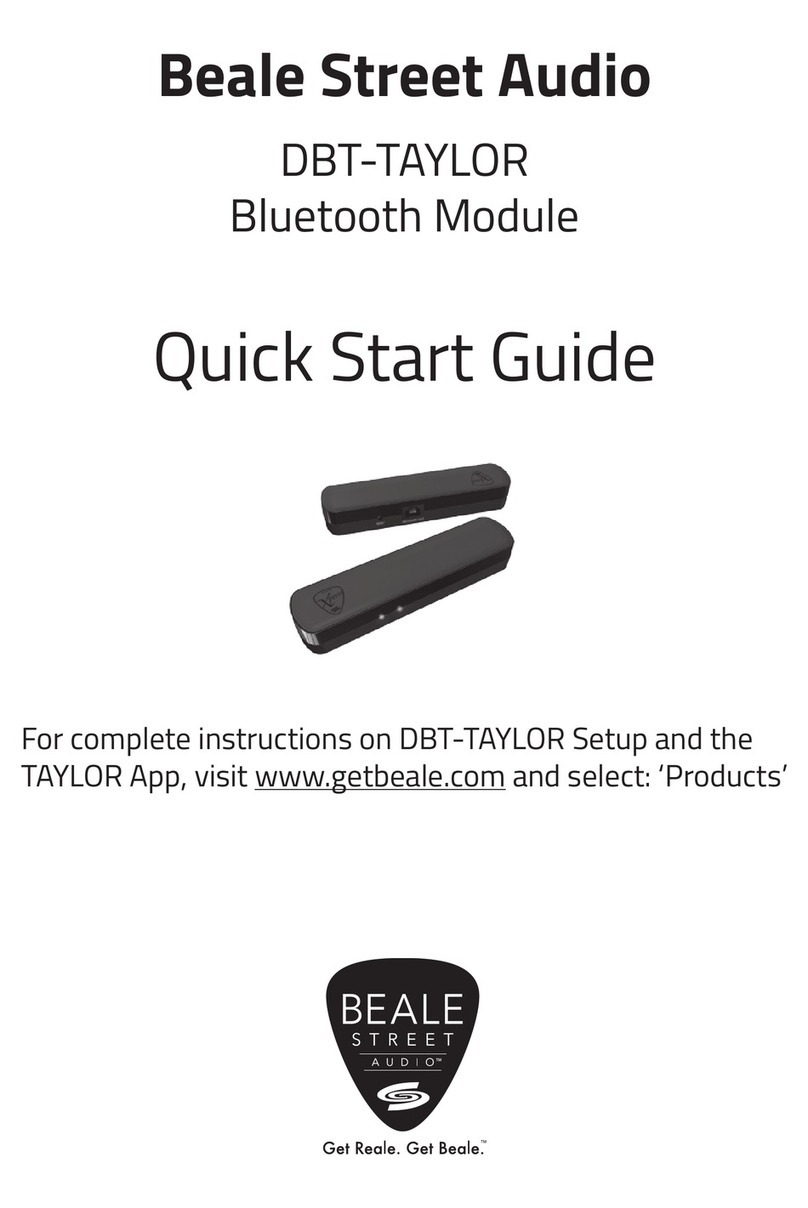
Beale Street Audio
Beale Street Audio DBT-TAYLOR quick start guide
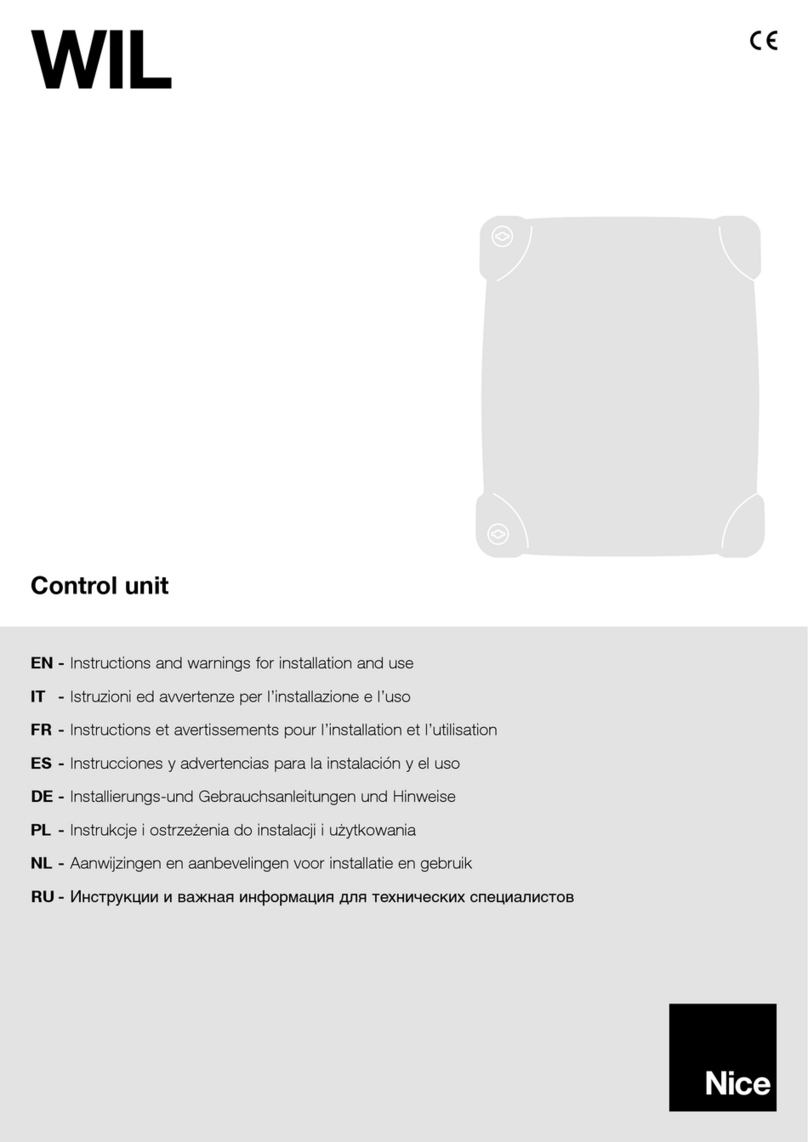
Nice
Nice WA20/A Instructions and warnings for installation and use
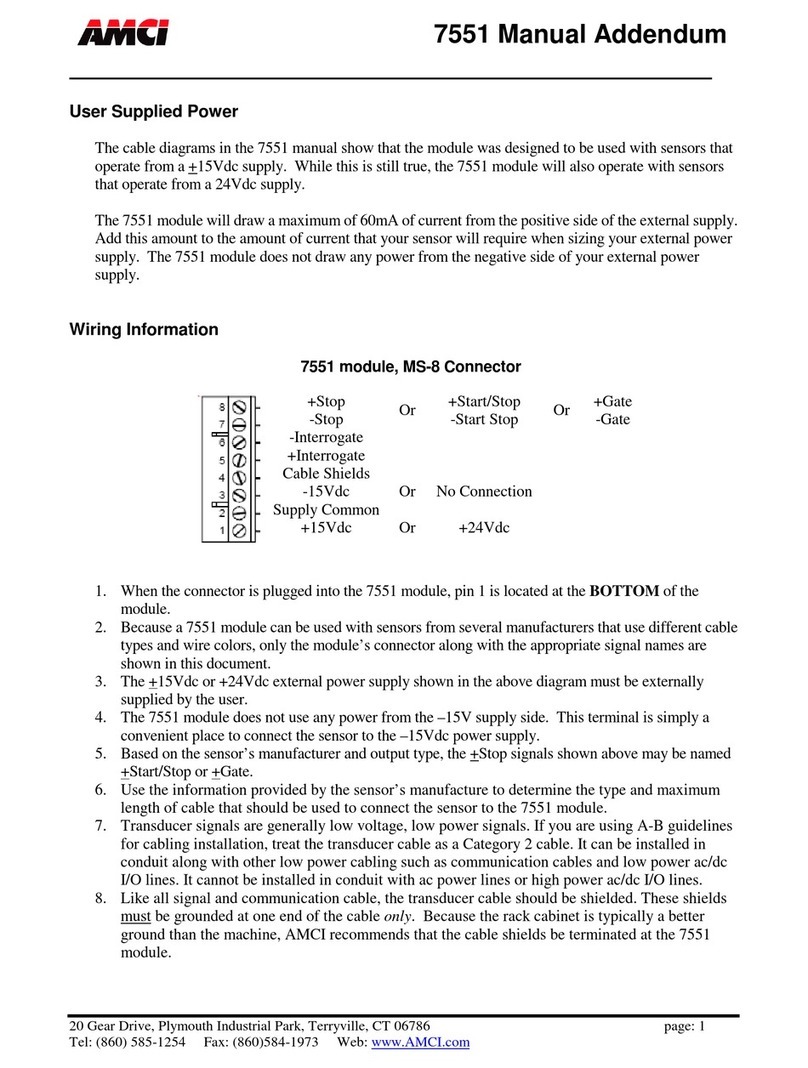
AMCI
AMCI 7551 Manual addendum

Carrier
Carrier INDUCTION AIR TERMINALS 36S installation instructions

ACM
ACM LS 1297 Instructions and warnings for fitters
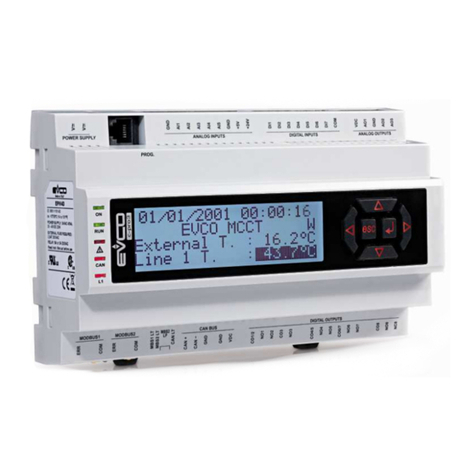
Evco
Evco C-PRO 3 CLIMA sistema+ Installer manual
